Whether it’s a few blackberries for popping in a crumble, some delicately fragrant elderflower for summer cordial, or sloes to enhance a homemade gin, most of us have foraged a little at one time or another. But with just a little extra know-how it is possible to discover a wonderful array of wild foods, especially here in Cornwall, sure to delight your palate and ignite your passion for the natural world.
What is foraging?
Simply put, foraging is returning to our roots. It is harvesting our wild edible foods, the tantalising treats that can be found in our fields, hedgerows, woodlands, foreshores and oceans. In recent years the movement towards finding more environmentally friendly, ethical, economical and sustainable food sources has had us all thinking about what we can do to make a difference.
The trend towards rediscovering our love for ‘local’ rather than exotic produce, reducing those air-miles and returning to a simpler way of producing delicious, fresh food is inspiring. And wild food foraging helps us to achieve all of those things, as well as being a fun activity that the whole family can enjoy.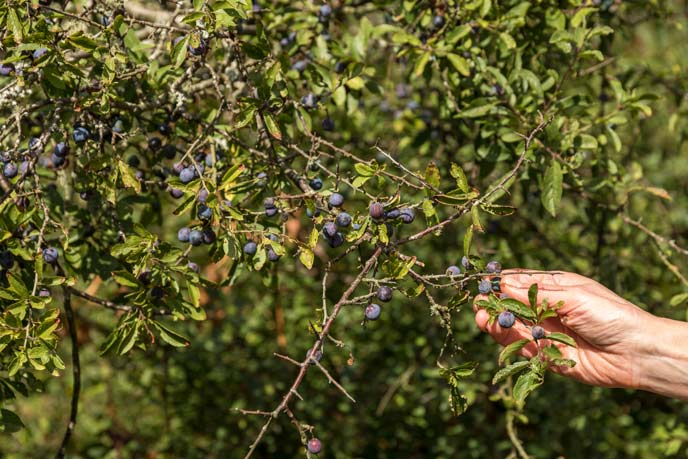
Coastal Foraging in Cornwall
Cornwall is the perfect place to learn about coastal foraging. Local people and businesses are leading the way when it comes to caring for the environment, there are numerous Cornish initiatives from plastic-free towns, to volunteer-run beach cleans, and even companies recycling old fishing gear into filaments for 3D printing.
When surrounded by so much beauty you inevitably want to protect it and one third of Cornwall has ‘Area of Outstanding Natural Beauty’ status, which gives it the same protection as a national park. The Duchy is incredibly ecologically diverse with more than 400 miles of coastline, making it ideal not only to find a stunning seaside place to stay but also for foraging from and beside the sea. Indeed, so called ‘gourmet foraging’ has led to some of Cornwall’s trendiest restaurants adding wild foods to their menus, it is not unusual to see sea vegetables and hand-dived oysters on offer. And while sounding extravagant, these ingredients are actually simple and more sustainable produce, available to everyone . . . if you know where to look.
So let’s start foraging and discover some of Cornwall’s freshest local produce! 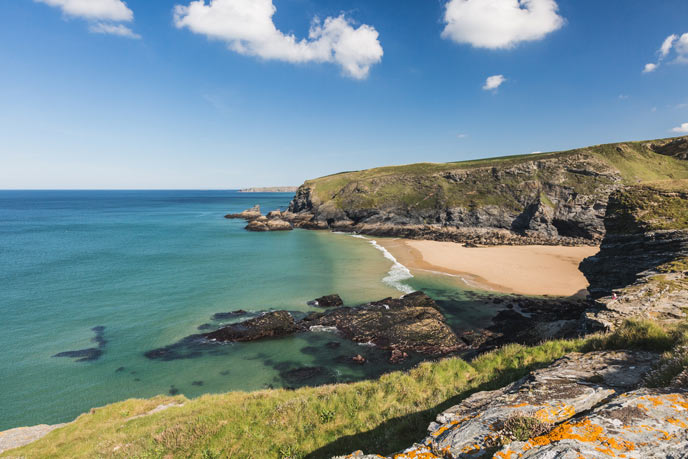
Foraging for Coastal Greens
Foraging for edible coastal plants is easy, healthy and rewarding, most can be found while walking along the coastal paths or within easy reach of the beach, in rock pools or shallow water.
Rock samphire
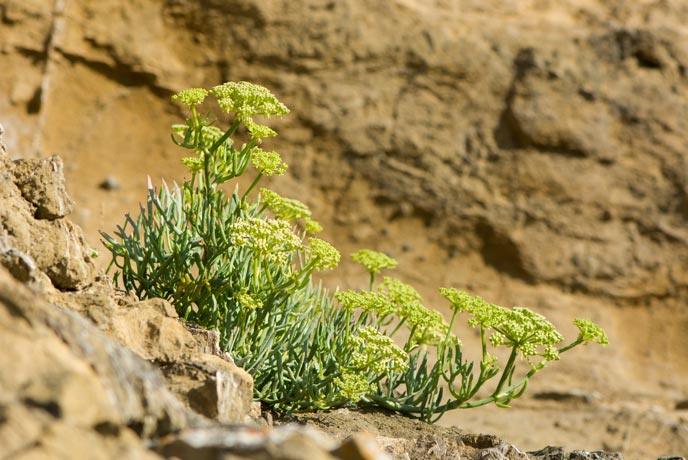
Found on coastal cliffs – May to September
Rock samphire, also known as sea fennel, is one of the most popular wild edibles. A member of the carrot family, it’s common to see it on restaurant menus. During the 18th and 19th centuries in Cornwall, whole families made their living from harvesting this plant to sell, and it still grows in abundance on the cliff tops. Samphire has a strong flavour and is great as part of a stir-fry, steamed or even pickled.
Sea lettuce
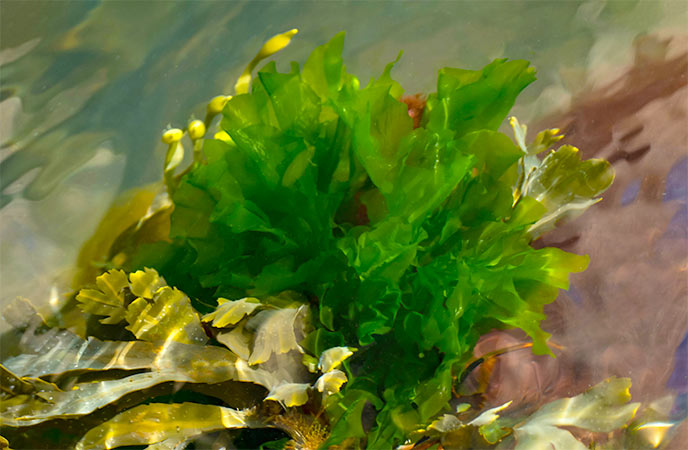
Found in rock pools – All year round.
This edible seaweed could easily be described as a superfood. It looks like translucent sheets of lettuce leaf and is packed full of minerals. High in calcium and magnesium, it is great for healthy skin, nails and hair. It is high in fibre too but very low in calories. Sea lettuce can be dried and eaten like crisps, crumbled on salads or eaten with fish or in sushi.
Wild Garlic
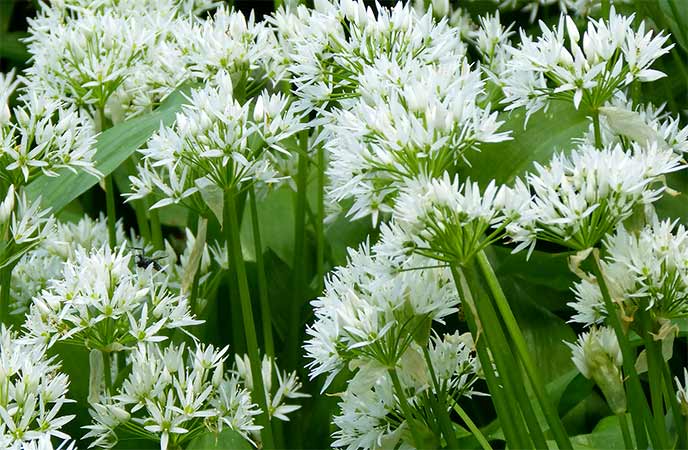
Found all across Cornwall in shady woodland, beside streams and footpaths – February to July.
Also known as Ransoms, you will probably be able to recognise this plant by its strong smell. It has long, shiny green leaves and delicate white flowers in spring. Both the leaves and flowers can be eaten, adding a powerful garlic flavour to any dish, it's especially good with pasta.
Thong Weed
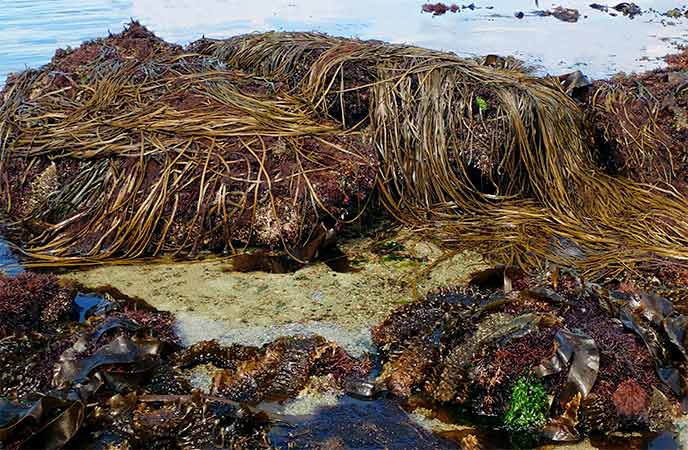
Found all around the coast – All year round.
Also known as sea noodles or sea spaghetti, this brown seaweed is another superfood, rich in calcium, zinc and magnesium and also contains the vitamins A, E, C, B1, B2, B7 and B9. This seaweed has a mild, salty taste and as the name suggests it can be cut into lengths like spaghetti and used in pasta dishes or stir-fries. It can even be dried and rehydrated when needed like pasta.
Sea Aster
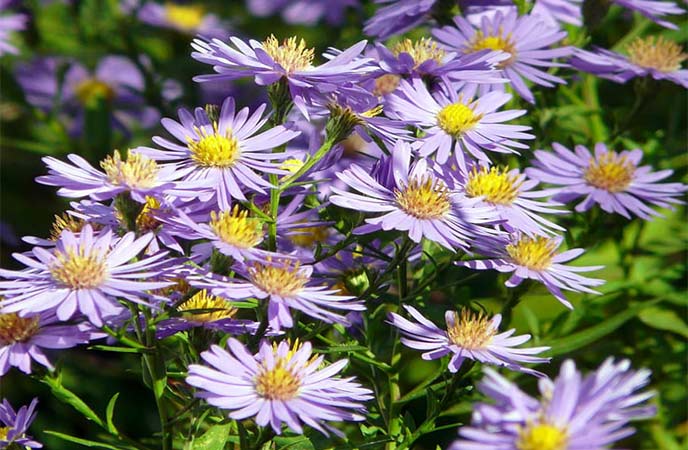
Found in coastal areas and around salt water river inlets – April to October.
With glossy, fleshy leaves and pale lilac flowers this flavoursome plant makes a delicious, slightly nutty, salty addition to any salad. The leaves are also great in fish pies and stews and can be used to roll sushi.
When foraging edible seashore plants/seaweeds it is important to remember not to strip the plant as it will struggle to grow. Seaweed can be harvested using scissors, and try to stick to fresh looking seaweeds attached to rocks rather than those washed up on the beach, which will be older and less tasty. Many sea creatures also make their home amongst seaweed, so just be careful while you gather what you need.
Foraging for Seafood
Catching fish and harvesting shellfish is the more adventurous side of coastal foraging, but the rewards are satisfying and delicious. All the seafood below can all be found along Cornwall’s coast and caught or gathered with just a little know-how.
Mussels
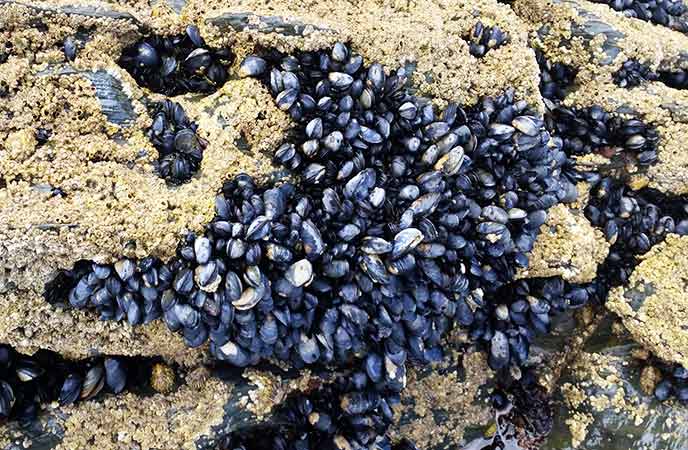
Found attached to rocks – only collect in months with a letter R
Cornwall is the perfect place for mussel picking. They can be found all around the shoreline but are especially abundant on the north coast. These molluscs can be picked straight from the rocks at low tide and the average portion size per person is around 500 grams for a main meal. Not picking them in the warmer months (May to August) allows them to breed, and be sure to only take mussels over 5cm long.
Cockles
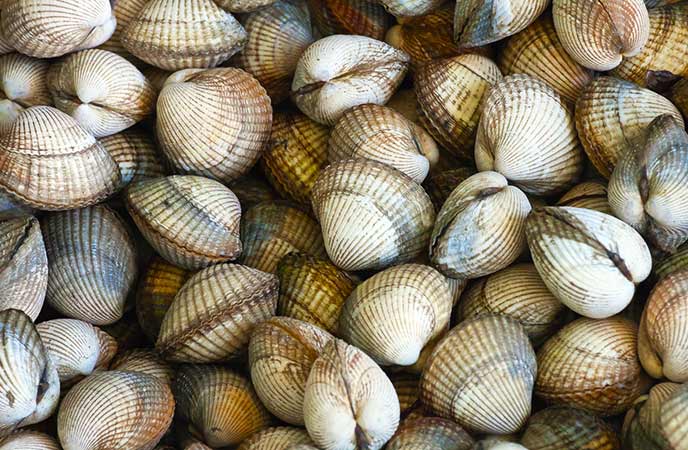
On estuary beaches – All year round
Cockles are a really underrated seafood and relatively fun and easy to collect. Once you’ve located a cockle bed (these are usually found on beaches in estuaries such as the Helford), use a rake, working backwards and pulling off the top layer of sand to reveal the little gems beneath. You may find the odd oyster or clam too. Simply gather, cook and enjoy!
Mackerel
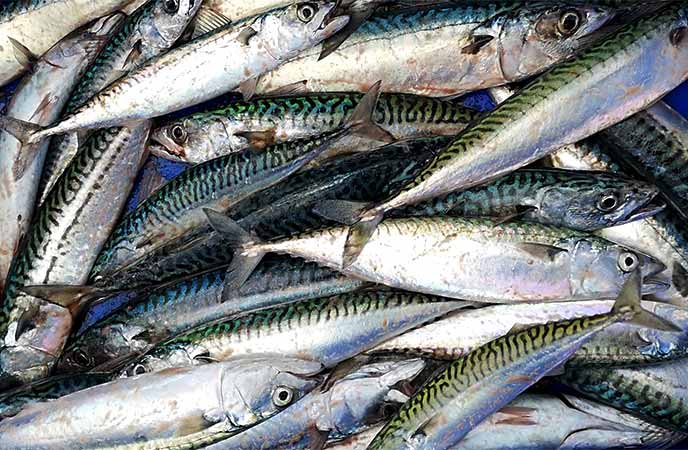
Close to shore - All year round
Cornwall is famous for its mackerel and they are one of the fish that can be easily caught from piers, rocks and even from the beach. It will involve a little equipment however, a simple rod or even just a hook and line is enough to catch your supper.
Winkles
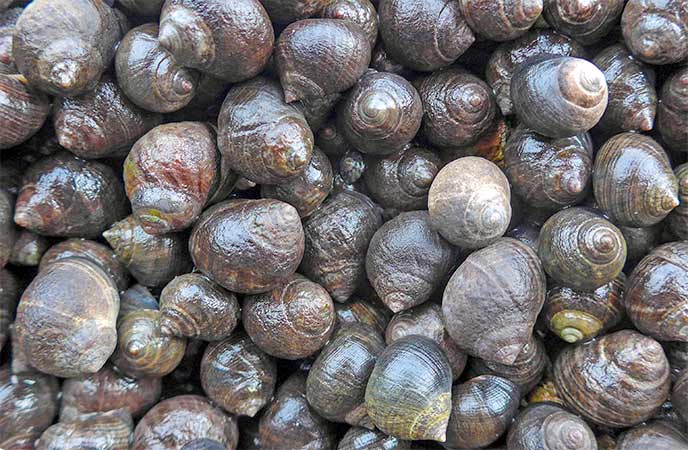
Shoreline – All year round
Winkles are probably one of the easiest shellfish to find while coastal foraging as they live highest up on the shoreline and can be gathered whatever the tide or time of year. They also enjoy a seaweed diet so you could harvest both at the same time.
Razor clams
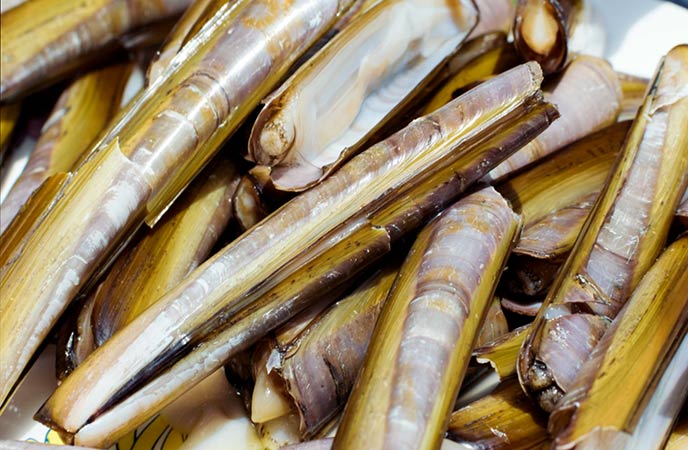
Sandy beaches – At low spring tides in months with an R
Catching razor clams is a bit of an art but their sweet, succulent taste, similar to scallops or squid, makes your effort worth it and it is also a really wonderful foraging experience! Clams bury themselves in the sand of wide, flat beaches. You can spot them by the little air holes they leave. Pour a little salt into these holes and the clam will bubble up to the surface where you can grab them!
Rockpools are an amazing resource for wild foraging, you just never know what you might find, from seaweed to shrimp, crabs and shellfish and of course exploring is great family fun too. But remember to only ever take seafood that is large enough to eat and only catch or pick what you need.
Protecting the Environment – Why foraging is important.
Foraging can really help you to reconnect with the natural world. Discovering wild foods is a great way to improve our knowledge of local ecosystems and help us to appreciate the intricacies and beauty of our environment. And while being closer to nature is great for our mental health it also inevitably motivates us to protect and improve the world around us.
Foraging can be beneficial for the plants too, picking some species actually allows others to grow, improving overall biodiversity. Some foraged edibles are incredibly good for you and even considered superfoods because of their excellent nutrient values. But, besides being environmentally sustainable, healthy and delicious, finding your own wild food is a fun family activity that everybody can get involved with.
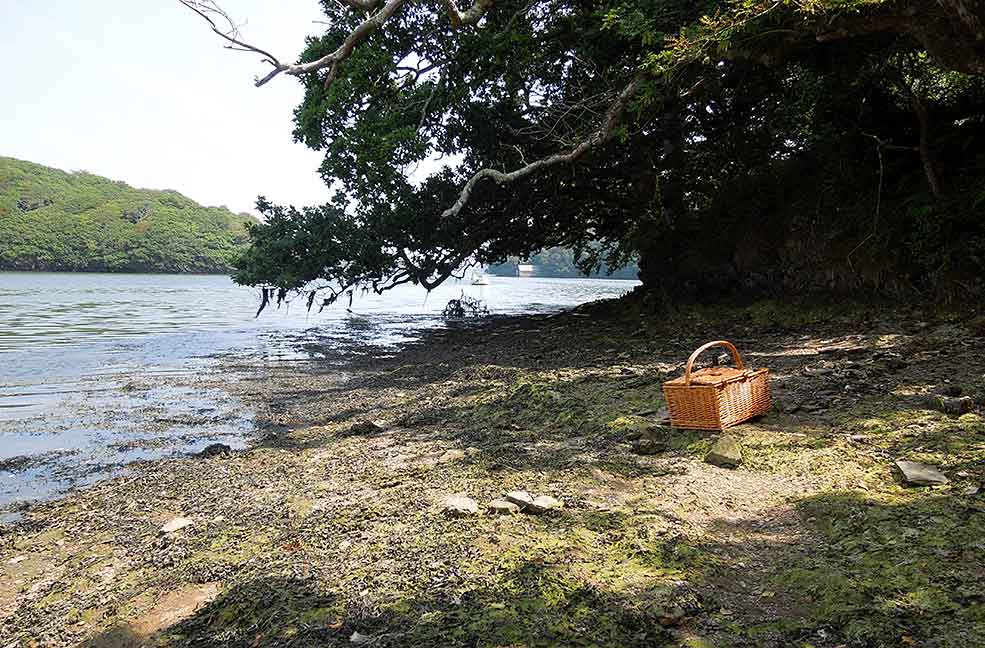
Foraged Feasts - Tips on Cooking your Finds
As you discover more and more delicious foraging finds and familiarise yourself with the myriad of flavours available, you will undoubtedly be thinking about how best to prepare these wild delights. With that in mind, here are some tips on cooking some of those foraged edibles and enjoy a little alfresco dining where you are staying.
Ransoms garlic bread – use any type of crusty bread rolls, baguettes are best. Wash roughly a dozen ransom leaves and finely shred into a bowl. Add 3 tablespoons of butter, a dash of olive oil and salt and pepper to taste. Bring the mixture together with a fork and spread through the middle of the baguette. Bake on tin foil for 10 mins at 180°C.
BBQ Fish wrapped in Sea Lettuce - Wrap a whole fish, mackerel perhaps, in sea lettuce and pan fry or barbecue – not only will it give you a crispy coating but the fish will stay beautifully moist too.
Wild Moules Marinières - Clean the mussels and rinse them well. Discard any that are open. Melt a knob of butter and glug of olive oil in a pan with a diced shallot and garlic clove. Add a glass of white wine, sprig of thyme and season. Put on the lid and steam the mussels until they open (usually about 10mins). Stir in a carton of single cream. After cooking, discard any mussels that stay closed.
Staying Safe while Foraging – Top Tips
1. Don’t be in a hurry, take your time and enjoy the experience of being outside in nature.
2. Be careful while walking on uneven ground, climbing over rocks or near cliff edges.
3. Always double check your identification of foraged edibles, a good guide book will help (see below) but also social media can be a great resource – if in doubt do not eat it!
4. Always harvest your wild edibles from clean sources, make sure there are no pollutants nearby. It is a good idea to check online for the water quality on your chosen beach.
5. Dress sensibly for the weather and the terrain – don’t forget sunscreen.
6. Respect the sea – always know tide times to avoid being cut off.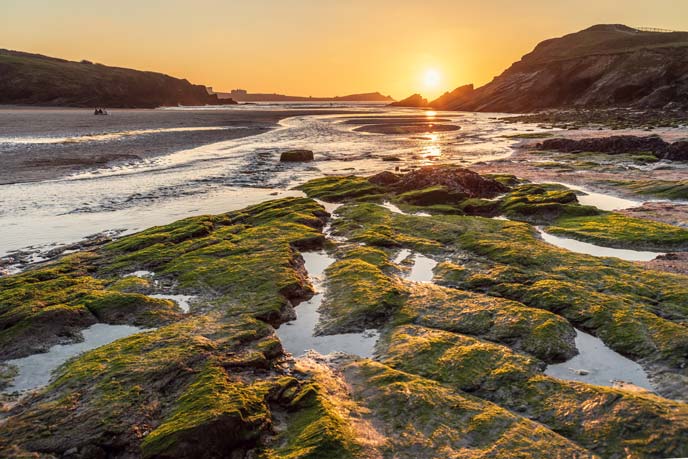
Foraging Courses
What to forage when, where to find the best wild edibles and how to harvest them are all skills that can be picked up with practice. But a great way to get a head start is to take a foraging course which will also guide you on how to forage sustainably and safely.
Rachel Lambert – Rachel has written several books about foraging and offers courses on gathering all kinds of wild foods including seaweed.
Fat Hen – this wild food school runs classes on foraging and cooking your wild edibles.
Reference Books
Never Mind the Burdocks – Emma Gunn
Wild Food Foraging in Cornwall and the Isles of Scilly - Rachel Lambert
Forage – Wild Plants to Gather, Cook & Eat – Liz Knight
Gather your wild food and take it back to a blissful holiday cottage in Cornwall for a feast.

